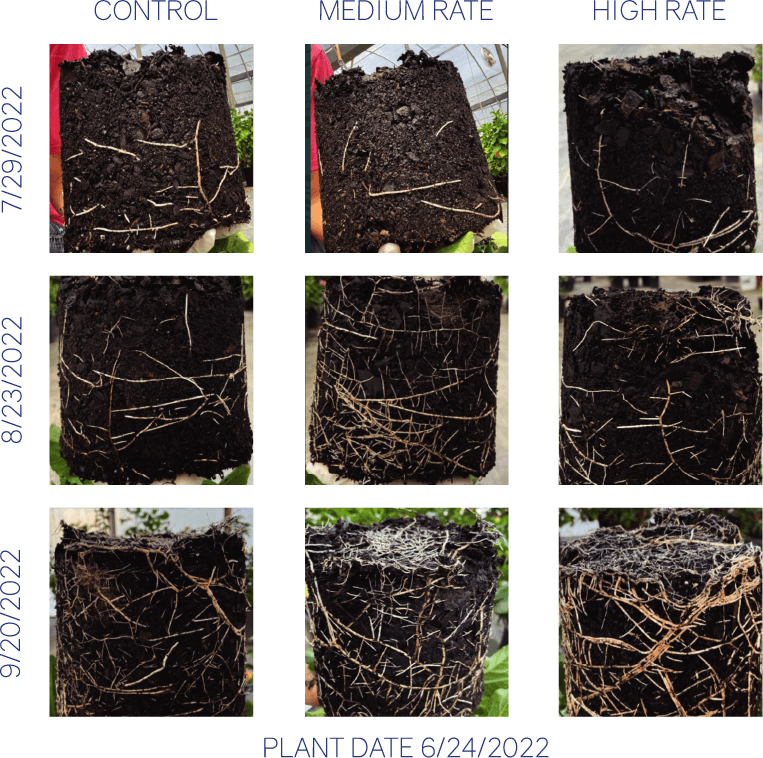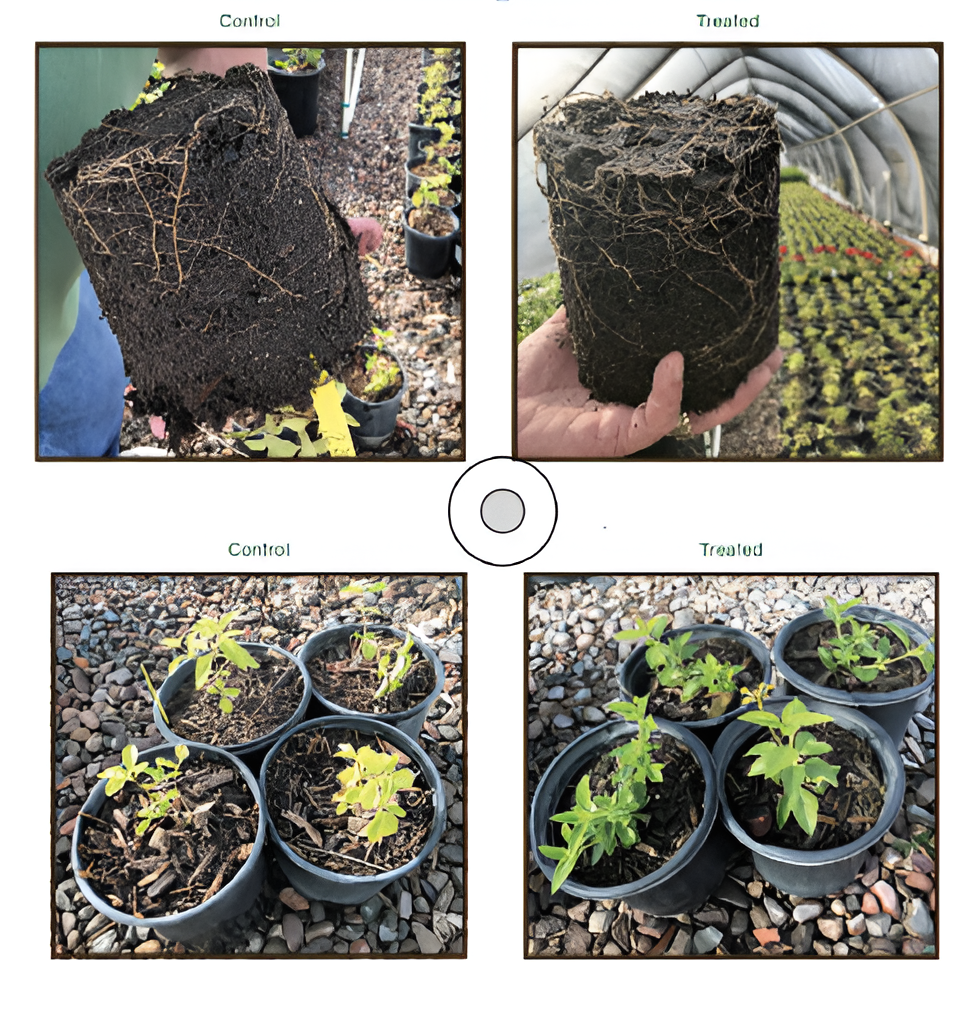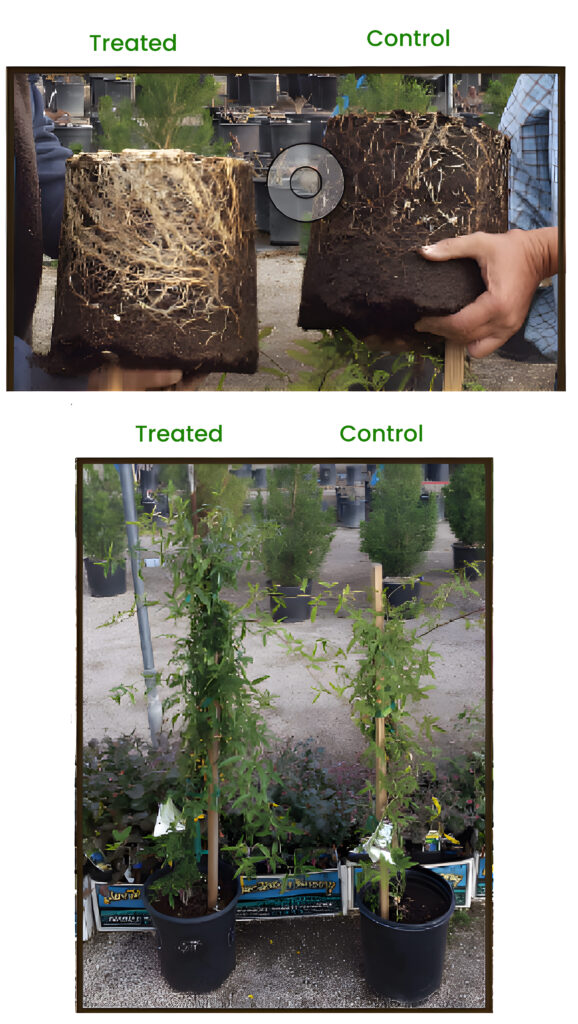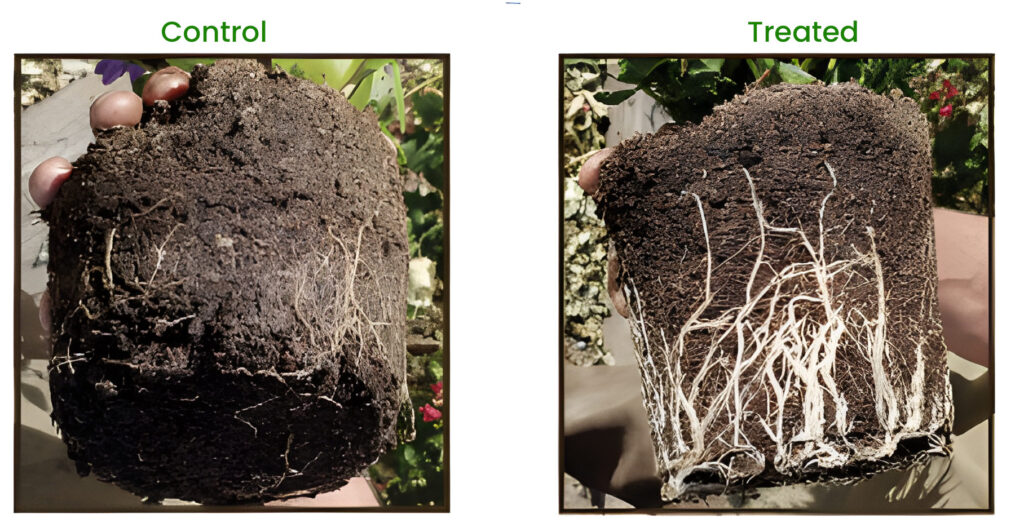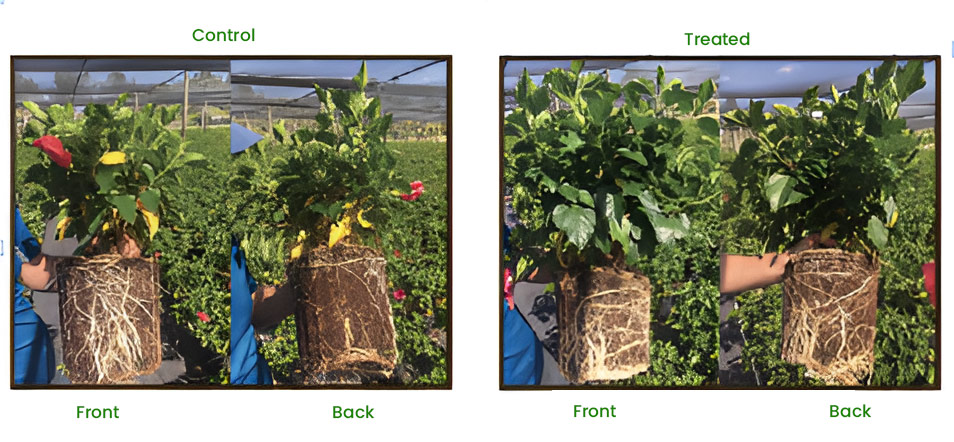Nursery Growers • Greenhouses •Tree Farms
Addressing plants during their most vulnerable state, MitoGrow’s carefully crafted products were made with growers and nurseries in mind.
MitoGrow Aqua 3-IA was developed for horticulturists to encourage growth in plants and trees effectively, affordably, and easily by increasing new root growth and helping trees absorb more water and nutrients. In turn, they are more resistant to environmental stressors such as drought, disease, and invasive insects.
AQUA 3-IA CAN BE USED IN ALL STAGES OF A PLANT’S LIFE AND CAN BE APPLIED IN MULTIPLE WAYS, INCLUDING:
Diluting in water and applying as a drench to the root zone
Spreading powder on damp soil in the root zone and lightly watering the soil
Blending with liquid fertilizer and injecting into the root zone
Applying via a fertigation system and mixing with other desired agricultural products
While Aqua 3-IA is not a fertilizer, it can easily be added to any plant care program with minimal changes.
Using a proactive approach to tree care, treating your trees and plants with MitoGrow products can provide the following benefits:
MOST PLANT SPECIES HAVE AN INCREASE IN ROOT MASS UP TO 30% AND UP TO 50% IN PLANTS AND TREES
IN DROUGHT TOLERANCE TESTING,
SEEDLING MORTALITY RATES DECREASED UP TO 60%
INCREASED AMOUNTS OF NUTRIENT ABSORPTION:
5X MORE CALCIUM
4X MORE MAGNESIUM
1.2X MORE NITROGEN
1.11X MORE PHOSPHORUS
6X MORE POTASSIUM
A FIVE-MONTH STUDY ON TWO-YEAR-OLD OAKS SHOWED TREES TREATED WITH MITOGROW AND FERTILIZER HAD AN
AVERAGE DIAMETER INCREASE OF 0.21 INCHES (128% GREATER) OVER TREES IN THE CONTROL GROUP; IN THE SECOND SEASON, THE DIAMETER GROWTH WAS 183% GREATER THAN THE CONTROL GROUP
Studies have shown the effectiveness of Aqua 3-IA on plants and trees in nursery, greenhouse, and tree farm spaces.
Aqua 3-IA Studies
Aqua 3-IA/Fertilizer Blend Effect on Potted Oaks — May 2018

SUMMARY: “… for the use of the Aqua 3-IA/fertilizer blend as a soil amendment, there is continued evidence that the product is much better for the potted trees than no fertilizer, but it is also better overall than simply using a standard 13-13-13 fertilizer. This conclusion was most pronounced in the two-year old sapling study, in which the Aqua 3-IA/fertilizer blend trees grew larger but also did not exhibit any die-back that one associates with fertilizer ‘burn’ that was observed for two trees in the T-13 trees. Indeed, the diameter of the two treatments appeared close, but the growth was measured on the re-shoots on the ‘burned’ trees. As well, among both saplings and seedlings, the trees growing in the Aqua 3- IA/fertilizer blend soil had more lush foliage, indicating greater potential for photosynthesis leading to better growth and tree health. While we expected the differences among the treatments to be even more profound by the spring of 2018, the rapid nutrient usage of the Aqua 3-IA amended soil most likely caused the differences to decrease. This indicates that use of blended Aqua 3-IA/fertilizer may warrant occasional repeated application of small amounts of fertilizer for optimization of a Aqua 3-IA treatment when used more than a year. Overall, the blended Aqua 3-IA/fertilizer produced the most ‘healthy’ soil that produced both tree growth and nutrient usage. This treatment combined with occasional topdressing of nutrients should yield a sustained superior tree.”
Aqua 3-IA Holden Research & Consulting Study

SUMMARY: Olive, weeping lantana, purple showers, and starcluster crops were treated with Aqua 3-IA over the course of 45 days. For each plant the whole wet weight and dry weight showed significant growth when treated with Aqua 3-IA
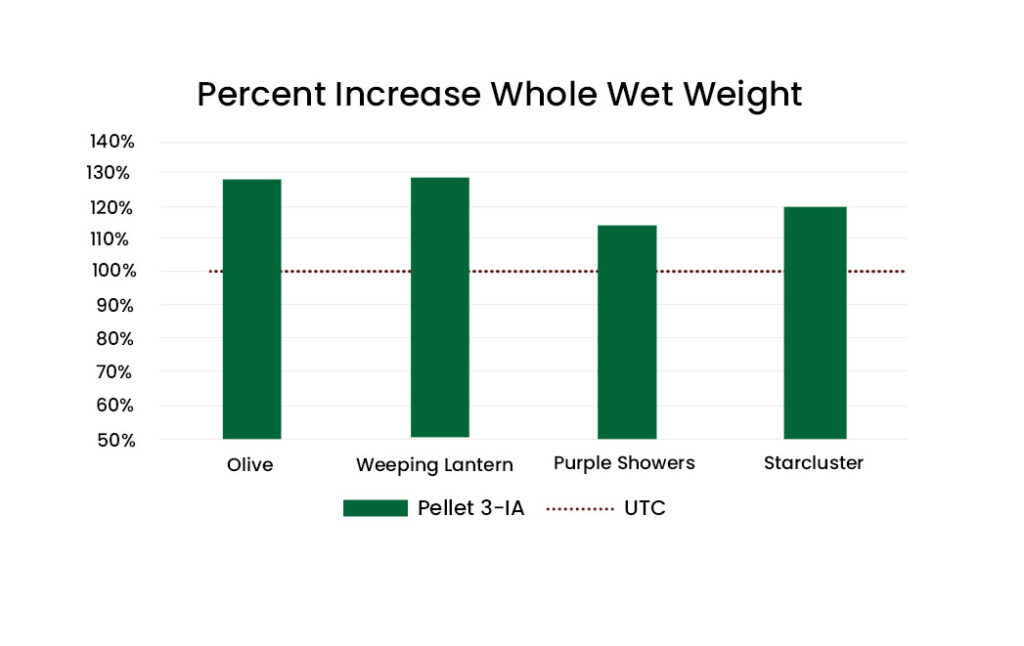
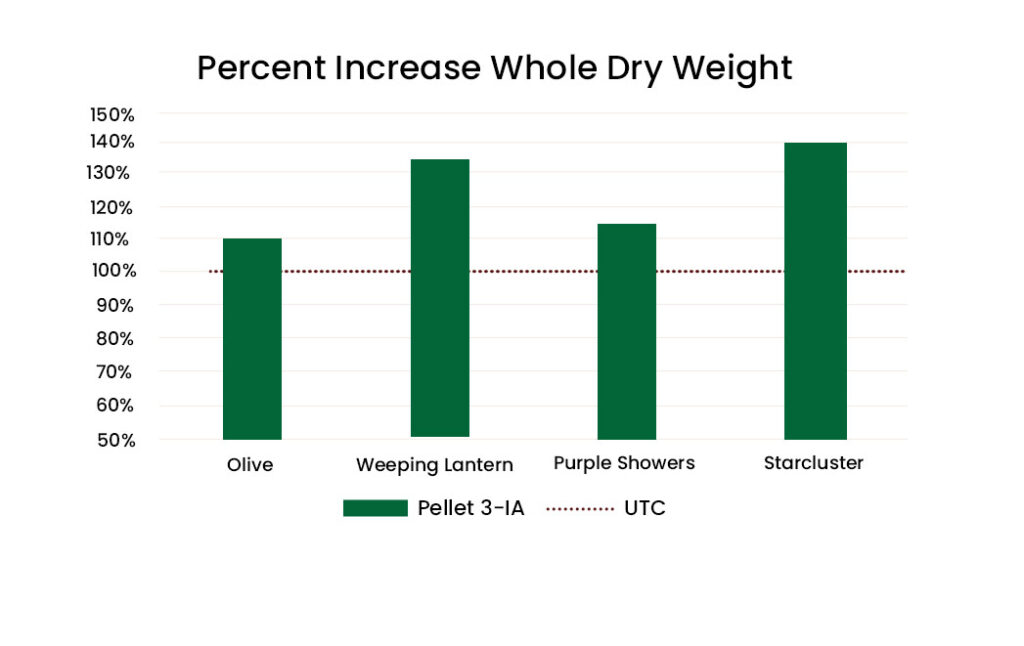
RESULTS:
Purple showers plant after one month
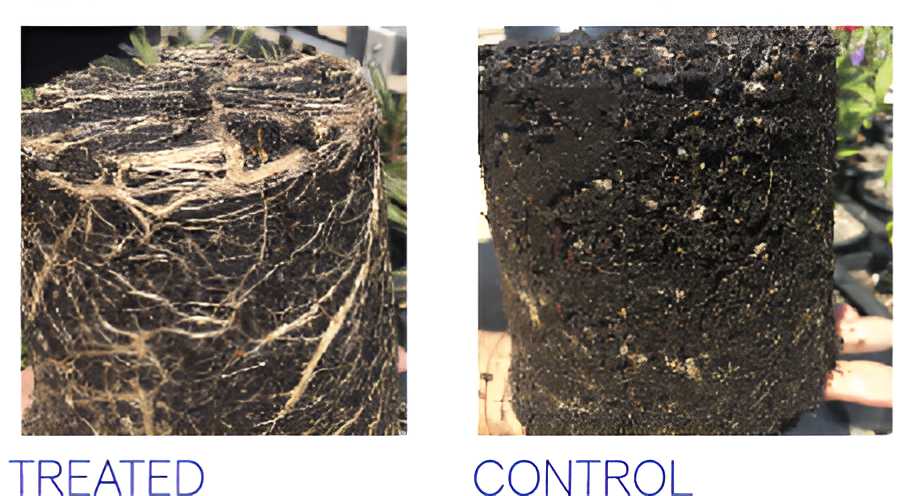
For full details on any of the above-referenced studies, please email MitoGrow at info@mitogrow.com







